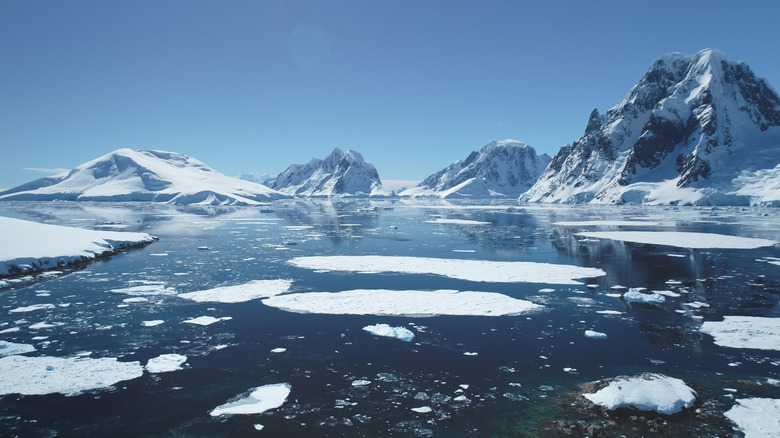The Search For A Lost Vessel Led Scientists To A Biological Discovery In The Antarctic
In March, 2022, marine archaeologists made perhaps the most sensational shipwreck discovery since the Titanic was found. Nearly 10,000 feet below the surface of the Weddell Sea off the coast of Antarctica, they found the remains of the Endurance, the famed vessel of explorer Ernest Shackleton, which sank on an expedition in 1915. Shackleton's harrowing escape from the wreckage made him a hero in his native Britain, so as expected, the discovery was met with great excitement. What slipped many people's attention though was an earlier expedition in 2019 that searched for the Endurance, but instead uncovered a truly bizarre biological phenomenon: a field of fish nests arranged in perfectly symmetrical rows.
The crew of 2019's Weddell Sea Expedition set out with two goals: a scientific survey of the Weddell Sea and the search for the Endurance. They utilized a remote-controlled subaquatic vehicle dubbed "Lassie," which allowed them to look deep below the surface ice. While they missed the ship, they discovered over 1,000 fish nests arranged in neat patterns. Viewed from above, it looks like the oceanic version of a sprawling American suburb. Some of the nests are even clustered in circles, as if surrounding a little cul-de-sac. The research crew filmed as much footage of the site as they could before they had to back out to avoid a wreckage of their own. Now they've published all the details of their findings in Frontiers in Marine Science, and results are pretty remarkable.
A complex aquatic neighborhood
The fish nests discovered in the Weddell Sea belong to a group of Lindbergichthys nudifrons, which has several common names, including yellowfin notie, yellowfin rockcod, and icefish. These small fish, which barely reach six inches in length, thrive in cold water environments. They are bottom feeders that eat benthos, a catch-all term for the invertebrates that dwell on the ocean floor. What fascinates marine biologists most though, are the breeding habits of this fish, which the recent research has shone a light on.
Icefish are highly methodical in their nest-building. They start with a bit of tidying, clearing their chosen spot of any debris, before constructing a circular nest from the sand. The fish lays its eggs in the center of the ring, and then keeps guard over them all the way until they hatch. Granted, this isn't particularly unusual behavior for a fish, but the careful arrangement of the over 1,000 nests in this area is.
After studying footage from the nesting site, researchers realized there was a strategy behind the pattern. Nests at the center of the cluster house the smallest and most vulnerable members of the community, while the nests around the perimeter house the largest, strongest fish. In this way, the site is like a gated community, with a protective border established to keep those within it safe from outside predators.
This remarkable find has major environmental implications
The discovery of this remarkable notie neighborhood could go down in history as a pivotal moment in Antarctic conservation. It is well-known that glaciers at the poles are melting, and rising sea levels pose a worldwide danger, but this newest find reveals a lot about the immediate local impacts of this change. In fact, the discovery was only made possible by the continuous shifting around Antarctica's ice shelf. Nobody had found this nesting ground before because, until recently, it was blocked by a massive piece of ice over 2,000 square miles in area. Then, in 2017, that hunk of ice broke away from the continent and became iceberg A68, which briefly held the title of the world's largest iceberg. It was only after that ice had drifted off that boats were able to access the waters where the fish nest.
Since the 2019 discovery, more expeditions have surveyed the Weddell Sea, and it turns out the colony of notie nests was just the tip of the iceberg. In 2021, marine biologists found a collection of over 60 million icefish nests in the area, the largest fish nursery ever discovered. That's a really big deal from a conservationist perspective. The population qualifies the Weddell Sea as a Vulnerable Marine Ecosystem under United Nations regulations. This could be the first step in securing protected status for the area and ensuring that these nests continue providing the protection they were built for.


